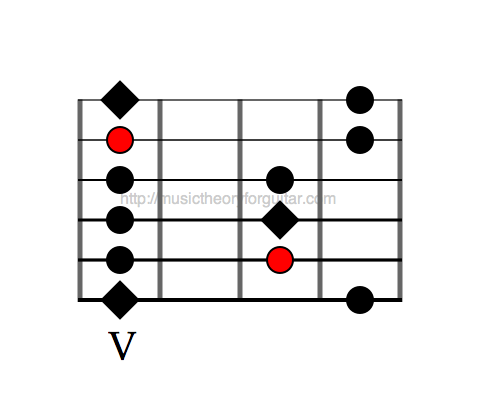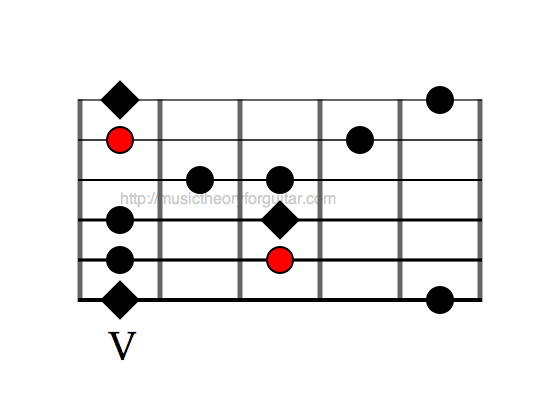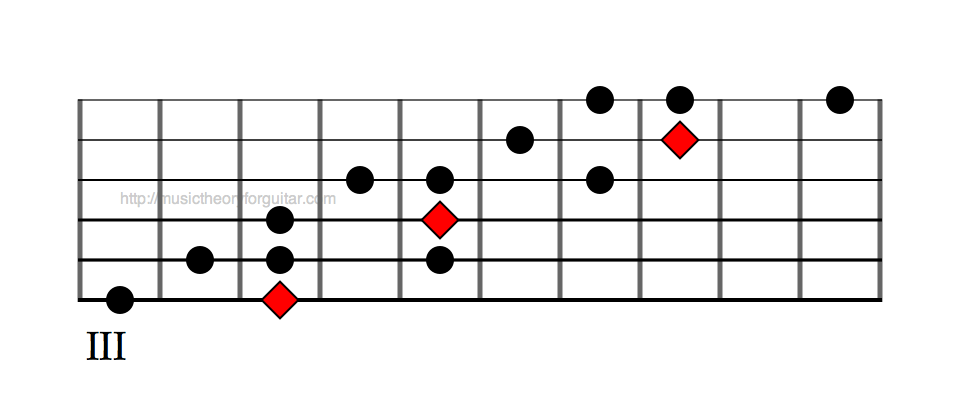The Mixolydian Pentatonic
Today I want to show you one of the best kept secrets of professional players: the Mixolydian Pentatonic. This scale has been known under many names (which shows how popular it is): Mixolydian Pentatonic, Dominant Pentatonic, Jeff Beck scale, Jan Hammer scale...
The Scale
The Mixolydian Pentatonic is deceptively simple, yet it sounds nothing short than amazing. I guess all of you are familiar with the “standard” A minor pentatonic:

Nothing new here. Well, now we are going to change one and only one note, and the scale will be completely different. We are going to take all the C notes in the scale and play C# instead. What we obtain is the Mixolydian pentatonic:

Another Way of Playing It
Here is another way of seeing the Mixolydian Pentatonic on the fretboard. This is the version I actually prefer to play:

As you can see, this scale shape repeats itself every two strings, making it very easy to remember and play. All the red diamonds are A notes, so as long as you know where the A notes are on the fretboard, you will be fine.
The Theory
Let’s see one possible way to use the Mixolydian Pentatonic and why it works in this case. Let’s say we are improvising on an A7 chord. Most players will use the A Minor Pentatonic scale (as shown above) whose notes are A, C, D, E, G. So far so good, but let’s see what notes are in the A7 chord: A, C#, E, G. Do you see the problem? The chord has a C# in it, while the scale has a C. While this may sound “bluesy”, it is also a dissonance since the two notes are just a semitone apart (to understand this, have one of your friends play an A7 chord while you play a C note: hear of it sounds “off”?). On the other hand, the A Mixolydian Pentatonic is made by: A, C#, D, E, G, so it’s a perfect match for the chord.
Since in a dominant blues you are using only seventh chords (if the Blues is in A you are using A7, D7, and E7), then the Mixolydian Pentatonic scale is a nice alternative to the usual Minor Pentatonic. The only thing you need to make sure is to use the A Mixolydian Pentatonic on A7, the D Mixolydian Pentatonic on D7 and the E Mixolydian Pentatonic on E7. It takes a bit of practice to be able do it, but it’s not as difficult as it sounds.
Chord Progressions
Finally, here are two chord progressions that you can use to improvise with the A Mixolydian Pentatonic:


The Mixolydian pentatonic is one of the many scales for Blues guitar that are used currently by Blues and Rock players to create great bluesy solos... to learn the other ones click below:
